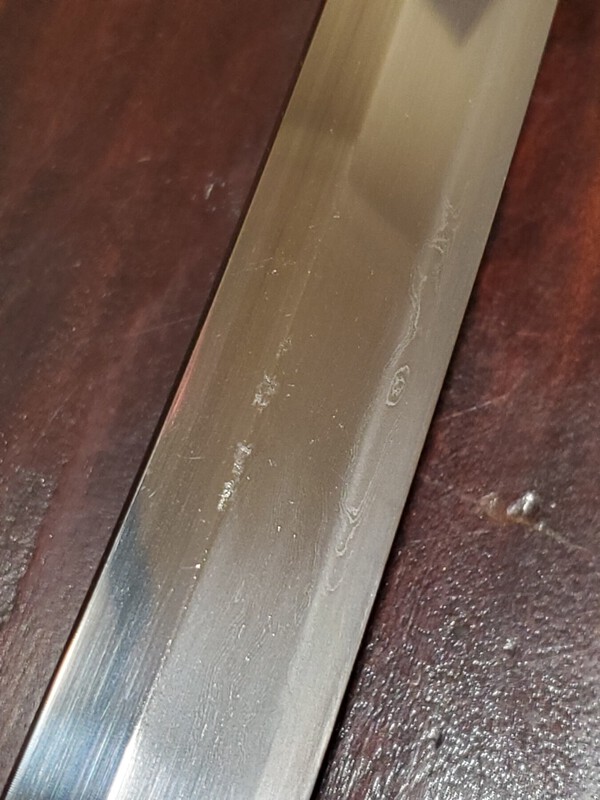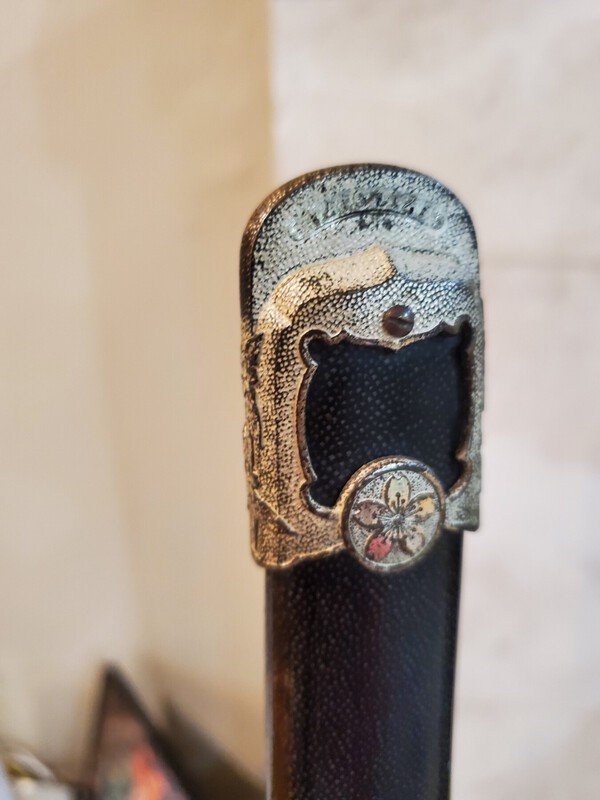-
Posts
51 -
Joined
-
Last visited
Content Type
Profiles
Forums
Events
Store
Downloads
Gallery
Everything posted by AlexiG
-
Hi Yves, I may be stating the obvious, but So Tsutomu passed in 2015 so commissioning new sword from him would be a bit tricky. If you like the blade, go for it. Should be able to get Hozon papers (if it does not already have them, like the one currently listed on AoiArt). I also feel that commissioning new swords keeps the art alive. If we collectively ONLY bought old swords, which are much cheaper on average, the current smiths will go broke, and the art will be lost. This is a recurring worry, if one reads the interviews in "Modern Japanese Swords and Swordsmiths From 1868 to the Present". Wish I had the $$$ to commission from Hokke Saburo Nobufusa. Alexi
-
Hawley list 10 Ietsugu (he spells it Iyetsugu) from Bitchu. Abbr rating Peak period IYE355 80 1213-19 IYE356 20 1234 IYE357 20 1347 IYE358 90 1362-69 IYE359 60 1375-94 IYE360 35 1346-69 IYE361 20 1394 IYE362 65 1452-90 IYE363 30 1452 IYE364 15 1525 He lists the signature 備中國家次 for IYE 363 and IYE361, but in my experience his signature lists are not exhaustive, e.g. others form the list above may have used the gojimei 備中國家次. I hope this is useful Alexi
-
Thanks John for resurrecting this. Example if a sword I just sent for the Dec shinsa. Lots of masame (not obvious from images) but mokume by the hamon with strange results. Will update when get results.
-
Hi Kiril, this is fundamentally exactly what I am trying to get to. Objectively, what makes Hosho very good, better than Kunikane? What makes "some" Kunikane good and others less so? Is it just the masame quality, or does the nioiguchi play into it? Examples? I understand that it might be difficult to convey without having the blade in hand but worth a try I dont doubt that Hosho is very good, and the one thing everyone seems to agree is that they made some of the densest masame hada (ji nie and all). So my question is whether that is where the judgement of quality ends for masame swords (plus kitae flaws), or if there is more to it as folks evaluate a blade for the skill of the maker not for personal preferences. Thanks for the thoughtful responses, Alexi
-
Thank you all for your replies! @Bryce Beautiful blades. May be one day I will be able to add a Gassan blade to my collection. Any thoughts on the nioiguchi of masame blades? Disclaimer on what follows: I am trying to learn and apply principles that I read about, but simply applying some guidelines without understanding them can lead to bad outcomes. In that spirit I am asking the question below. If I apply the principles of Nobuo Nakahara (facts and fundamentals of Japanese swords) about nioguchi quality and it being the key to understanding the skill of a smith (uniform, uninterrupted, defined/sharp boundary with habuchi, not too think or too thin) then from the examples above one can make some interesting (or questionable conclusions). The Yoshimitsu and Kiyondo blades standout and Hosho blades look like the "lowest skill" (irregular thickness, fuzzy border, nioiguchi getting close to the edge, ect). So here is the question: how much of that is the age and excess polish on the Koto blades, how much is just stylistic preferences (not bad just different rules for masame), and how much is indeed skill, or lack there of? The hardest part of this is to be objective as Hosho blades are the rarest and the most expensive in this lot and are often with the densest masame, which typically is a desired sign of quality (Yoshimitsu definitely went super dense with his tanto but got a very well defined nioiguchi). Thoughts? Best, Alexi
-
Hi all, I have too many hobbies. I have been doing bonsai now for over a decade and have trees that were accepted in the National US Exhibition several times. What bonsai taught me is while there are overarching principles around proportion and age, you judge/evaluate trees by the specific attributes of the species (and style). For example, what matters for shimpaku junpiers (lots of interesting deadwood) is a non-starter for maples (at least in Japan); what is essential for black pine (age and quality of the bark) is irrelevant for junipers where bark is often removed before a show, etc. I assume some of that applies to swords but I might be wrong.... So here is my question. With respect to swords made in masame-hada, what makes you consider it very skillfully made vs average or poor? Would you apply criteria differently to koto/shinto/shin-shinto/gendaito blades in terms of quality of manufacture? I suspect looking at tight hada, uniform nioiguchi and clear habuchi applies all the same, but maybe not. What do you think? What else do you look for in a masame blade? Below are links to masame swords from different schools/times and rankings. Feel free to link to other examples that better show what to look for in masame blades. Kunikane_Gen2_Juyo Kunikane_Gen2_TH Kunikane_Gen3_TH Hosho_TH Hosho_Juyo Hosho_TH Sue-Hosho_Hozon Kiyondo_TH Kiyondo_TH Norikatsu_TH (Also check examples by Jeremiah here) Ono Yoshimitsu_Gendaito Motomichi_Gendaito Yasutsugu_Gendaito Hokke Saburo Nobufusa_Gen8_Gendaito_Hozon Best, Alexi
-
Indeed there is one in San Francisco with next meeting this Sunday 9/17 (Yamato school lecture). Not missing that one Meetings (ncjsc.org)
-
Thaks for sharing! Now you are giving me ideas Alexi
-
.thumb.png.85f3fd036d09507865860724219753c4.png)
Gendaito Toshihira Katana Blade?
AlexiG replied to Dr Greenthumb80's topic in Translation Assistance
compare the execution of the signature on the sword above to this example. The Yasurime also looks different. Here is the link with more pictures and final price (>2M yen) AS22423 Tachi: Osumi Toshihira Saku(Living National Treasure)(NBTHK Tokubetsu Hozon Token) – 日本刀販売の葵美術 (sword-auction.com) Alexi -
He is also on p170 of Gendai Toko Meikan. From what I can teel, the key info is in what Ray wrote above.
-
I'd like to echo Jean Collin's point above. The execution of the kanji can matter a lot. There is a figure in Rober Robertshaw's book on the Hizen tradition (p51 of the pdf version) that I found eye-opening with respect to the detail and deliberate action of mei placement and execution. My "take home" from that figure was that details matter, and an experienced collector can get a lot of detail from the mei. I am including the figure here, I hope I am not breaking any rules. The numbers on the bottom of the figure are the 9 generations in the main line. So from 4 kanji (they all used on occasion the five kanji signature), based on the stroke orientation, one can draw conclusion about the generation and compare that to the blade itself (which obviously should be the first thing you look at ) Mismatch between the what the blade and the mei tell you is a cause for suspicion. Best, Alexi
-
.thumb.png.85f3fd036d09507865860724219753c4.png)
NBTHK Hozon Certification Translation Please
AlexiG replied to Northeastern Port's topic in Translation Assistance
There seem to be quite a few smiths using that name Kanenori search at NihontoClub -
.thumb.png.85f3fd036d09507865860724219753c4.png)
NBTHK Hozon Certification Translation Please
AlexiG replied to Northeastern Port's topic in Translation Assistance
looks like hozon token attributed to Kanenori (兼則) to me but let see if others agree an example kanenori below https://nihontoclub.com/smiths/KAN1923 -
I noticed a bit of a discrepancy between the sword rankings that Mr. Tsuruta puts on top the page for each sword on the English vs Japanese page for the identical sword. I am very new to learning Japanese so it is very possible that this is just my poor understanding, so I wanted to post here to get an opinion. In general, the ratings seem to sometimes be inflated by one level on the English pages but again, I could be wrong. Below are few examples as I was browsing. Example where ratings match (Saijo saku, 最上作) English: https://www.aoijapan...nd-nbthk-juyo-token/ Japanese: https://www.aoijapan.jp/刀-無銘保昌第22回重要刀剣/刀: 無銘(保昌)(第22回重要刀剣) | 日本刀販売の葵美術 (aoijapan.jp) Few examples where ratings seem mismatched Saijo Saku (最上作) vs Jojo saku (上々作) English: https://sword-auction.com/en/product/15511/as22431-刀義光造-無鑑査刀匠/ Japanese: https://sword-auction.com/ja/product/15510/as22431-刀義光造-無鑑査刀匠/ Highest quality = jojo saku vs highest quality = Saijo saku (in this example both pages list the sword as jojo saku but the explanation is misleading) English: https://sword-auction.com/en/product/17868/as23271-刀:肥前国住保次作/ Japanese: https://sword-auction.com/ja/product/17867/as23271-刀:肥前国住保次作/ Jojo saku (上々作) vs Jo saku (上作) English: https://www.aoijapan...kubetsu-hozon-token/ Japanese: https://sword-auction.com/ja/product/18572/as23137-刀:無銘保昌(特別保存刀剣)/ This is by no means exhaustive but it is the few instances of when I took the time to look at the Japanese page. What are your thoughts? Is just my imagination/severely limited Japanese? Alexi
-
Based on the Kunikane conversation above, we should not trust Gen 4-10 Kunikane signatures. Am I getting this right? Here is an affordable Kunikane example with a NTHK-Kantei paper that might be Gen4 or 5 based on the Info n Nihontoclub.com https://www.toukenko...&katana_A030522.html Signed "奥州仙台住國包" What are your thoughts? Gimei?
-
.thumb.png.85f3fd036d09507865860724219753c4.png)
New Collector - Need your opinion on this piece.
AlexiG replied to Bailey78's topic in General Nihonto Related Discussion
I will stick my neck out and suggest you send it for shinsa. I would without hesitation if I thought I had Hosho blade, but that is me I have a blade in the Sept shinsa and plan to send another one in Dec and neither is as valuable as a Hosho school blade. But it does come with costs, so up to you. I have a blade that had one attribution from Tokubetsu Kitcho Token (Yamato School-Nobuyoshi) and another form a recent NBTHK shinsa (Kongobyoe School). As mentioned in a previous post, the older Kitcho attributions are not deemed very reliable these days. Congrats on the nice looking blade! I like Yamato den swords a lot! Alexi -
Hi Barry, you have my attention Below are few more photos. I am afraid I am a bit sidetracking the thread but pleas indulge I have no clue about the time period of manufacture for the habaki. But it slightly larger (taller than the blade at the mune). Hopefully that is visible on one of the photographs. I see a clear shift of the geometry of the nakago. It goes from old, rounded and deformed by rust to a flat and shiny edge. this is visible on both top and bottom sides. Does that strengthen your hypothesis? Best, Alexi
-
Hi Ian, definitely an interesting hypothesis. The nakago condition looks, to my inexperienced eyes, a lot older than a showa blade and the shape has a koto-feel to it, but you do have a point about the temper line appearance and mixed steels. The blade looks like it has been shortened. Two reasons to say that. The temper line disappears into the rust of the nakago rather than curving down, and the habaki seems to have had a different location further down on the blade. See change of color/rubbing across the nakago right above the first mekugi-ana in the picture below. Thanks! I am not in a hurry to throw money out of the window Alexi
-
Yasutsugu (肥前国住保次) from Saga prefecture made some yamato style blades (at least masame hada, not sure about high shinogi but will know more when I get it in hand). According to Mr. Tsuruta from AoiArt, he was born in 1910 so might have been active during the war but from what I have found, he got his license in Showa 44 (~1970) and all the swords I have seen with that signature are signed early to mid 1970's. Picture from AoiArt of a sword I bought is below. Would love to add a Hokke Saburo Nobufusa to my collection. I have been bitten but the masame hada bug....
-
Awesome! Thanks John, found the references.
-
the sword. It is masame mixed with itame but the masame is hard to photograph and is clearer at the monouchi (P.S. For the closeups, the sword is not laying on the surface although it may appear to be I it is on a sword pillow)
-
This is a bit of an old thread but wanted to post here as the examples of kaigunto koshirae are fantastic. I recently bought a kaigunto sword and the ishizuke is different from what I typically see. Any significance to the type of ishizuke? The sword has sharkskin covered saya and the button release latch. The blade is mumei and seems old. I am planning to send it for shinsa in December, unless someone here thinks it is a complete waste of money.
-
.thumb.png.85f3fd036d09507865860724219753c4.png)
Gendaito Swordsmith Reference Books
AlexiG replied to AlexiG's topic in General Nihonto Related Discussion
Thanks for the link, Francois. Definitely appreciated the references there. Now if someone would make something similar for the Saga Prefecture gendaito smiths -
(If this topic belongs to another forum, feel free to move) Hi All, I am new here and still learning to navigate the site. Quick search did not find a discussion on this topic but I may have overlooked something. I am trying to find information about a gendaito swordsmith, and it has been difficult. Verly limited information online (pretty much just a given name). So my question for you folks is: What are your go-to reference books for gendaito swordsmiths in English or Japanese? I have Gendaito Toko Meikan, Marcus Sesko's 3 volumes "Swordsmiths of Japan", "Modern Japanese Swords and Swordsmiths" by Leon Kapp and "Swords and Swordsmiths of the Gendaito Period" by F. Fimio. What other "must-haves" would you recommend? In case you are wondering, this is the smith I am interested in: (Yasutsugu) 肥前国住保次. Given name is Yujii Motomoura (元村勇次) according to most references, or Yasuhide Motomura (元村 保秀) based on one document form Saga Museum. Both were residents from the same town in Saga prefecture (Kawasoe 川副町). Maybe the same person? Birth date will be nice. Anyway, thanks for any input, Alexi
-
Hi all, Just taking few moments to say "hi". I have been collecting arms and armor for close to 20 years now but for the past year I really got into Japanese swords. My multiple searches kept landing me on this board, so I finally decided to join. I have not participated in online forums for ~15 years now (was quite active on MyArmoury in the early 2000's) but the quality of the conversation here made me reconsider. I am in the Bay Area of California and did manage to make it to the SF Show last week. I enjoyed it quite a bit. I have made some reasonable buys and some questionable buys over the last year. All part of the learning curve, I guess. As of late I have gotten really fascinated with the Yamato tradition and that is where my next purchases will likely be, but I am sure my tastes will change and evolve (been through this before ) I have many questions but will save those for their own threads. Cheers, Alexi



.thumb.jpg.2fd2d48641f446c938ddc9171a841f8c.jpg)
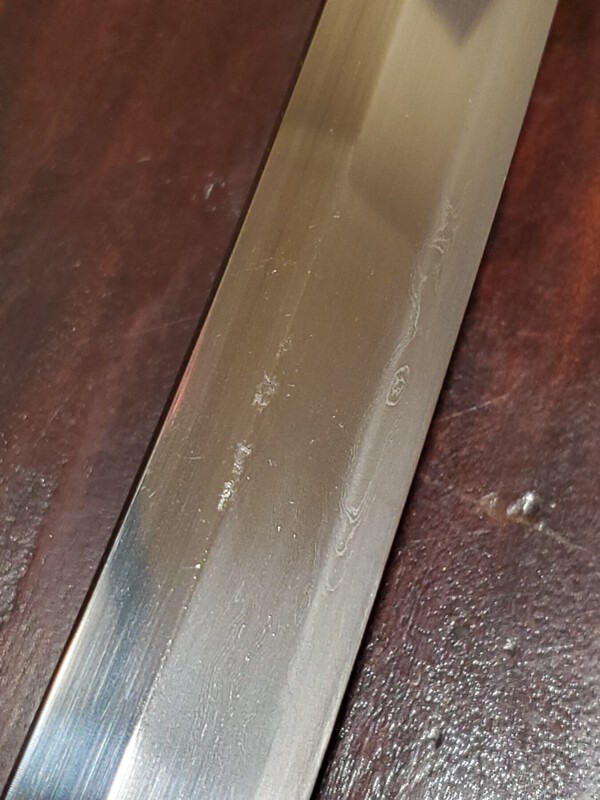



.thumb.png.4c65ecffa1f904b58d7ee458e6dd7431.png)


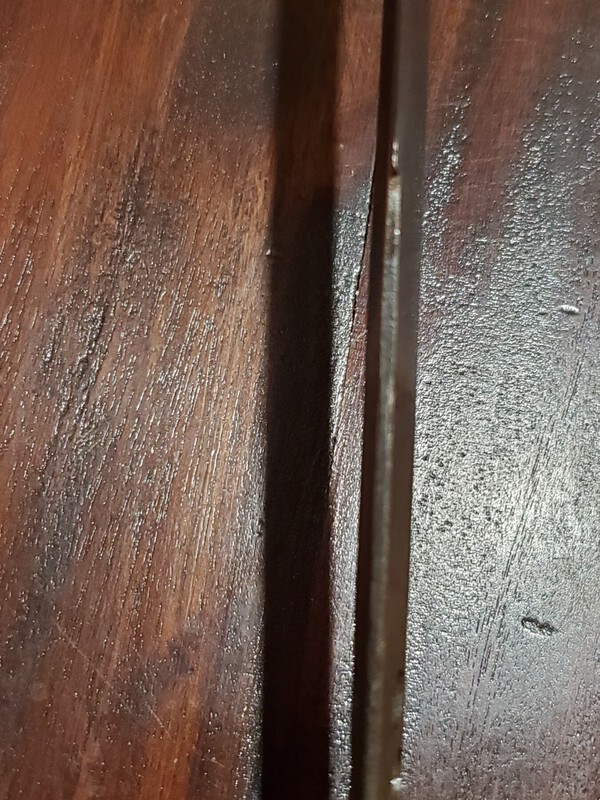

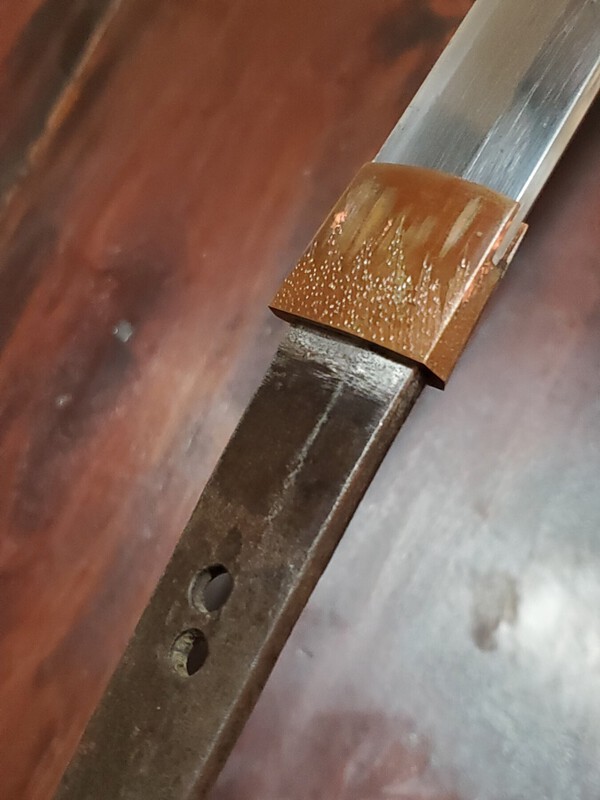
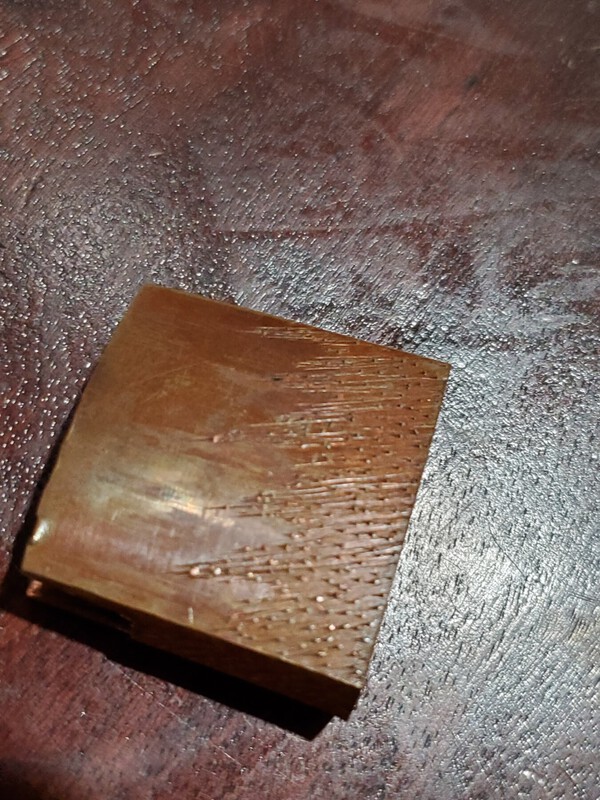

.thumb.jpg.38a3459496652d55d95eb5d4c7bbc9e4.jpg)


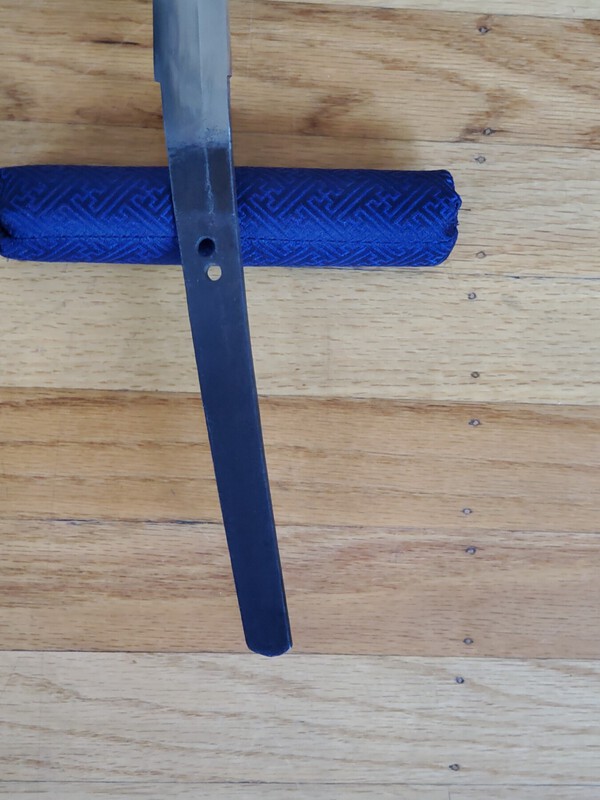
.thumb.jpg.66705a2baffa93225cbe76a79950469e.jpg)
.thumb.jpg.75ab6d1de7f2c35668cccc7c15efceba.jpg)
